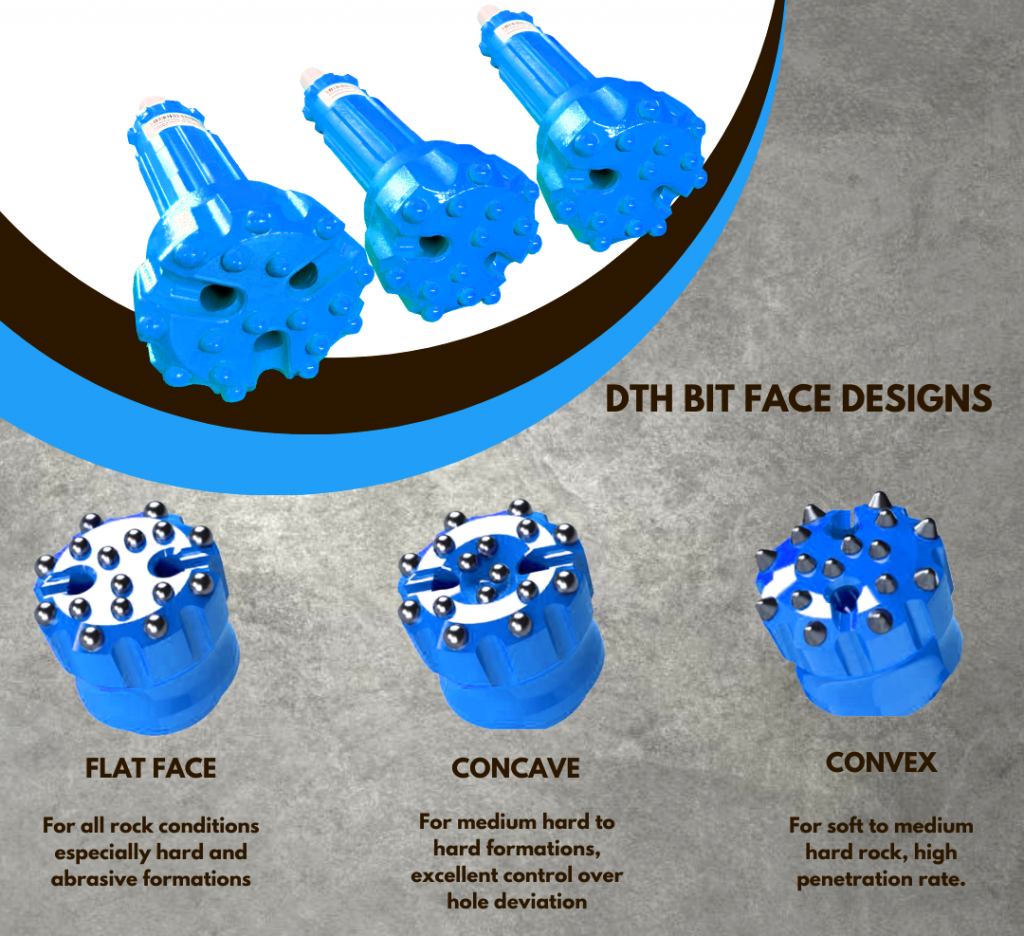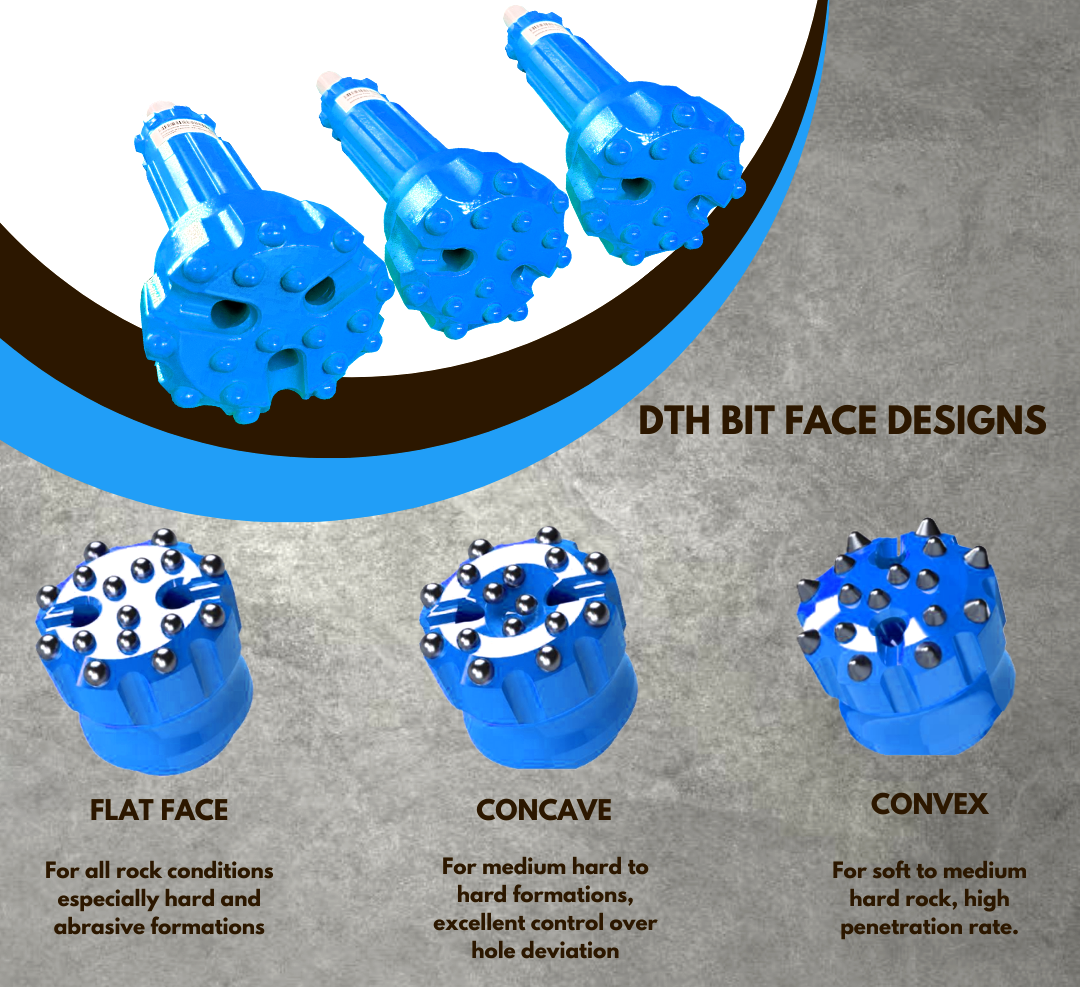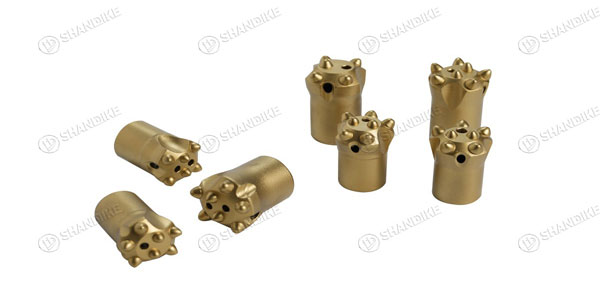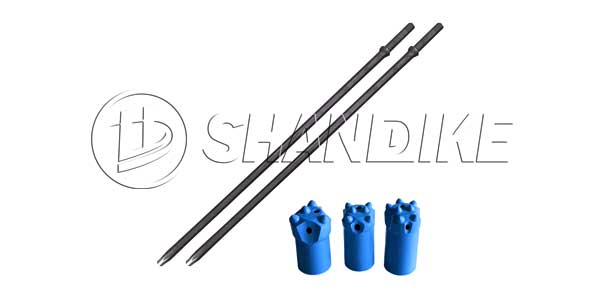How to Choose correct Bit Head Design for DTH drill bits?
Choosing the correct bit head design for Down-The-Hole (DTH) drill bits involves a systematic approach that considers geological conditions, bit characteristics, and operational parameters. Here’s a structured guide to making the right choice:
1. Assess Rock Formation Properties
– Hardness:
– Hard Rock (e.g., granite, basalt): Opt for a convex head design with fewer, larger, hemispherical buttons (180° tip angle) to concentrate impact energy and resist wear.
– Soft to Medium Rock (e.g., limestone, sandstone): Use a concave head design with more, smaller buttons (130–150° tip angle) for efficient cuttings removal and reduced balling.
– Medium to Hard Rock: Consider a flat head design as a versatile option.
– Abrasiveness: Select materials with high wear resistance (e.g., premium tungsten carbide buttons, alloy steel body with robust heat treatment).
2. Button Configuration
– Number and Size:
– Hard rock: Fewer, larger buttons for focused impact.
– Soft rock: More, smaller buttons for broader coverage.
– Angle:
– Steep angles (hemispherical) for hard rock durability.
– Sharper angles for soft rock to enhance cutting efficiency.
– Gauge Protection: Ensure robust outer buttons to maintain hole diameter and prevent premature wear.
3. Flushing System Design
– Ensure adequate flush ports for efficient cuttings evacuation. Concave heads may offer better clearance, while convex heads require strategic port placement to avoid clogging.
4. Material and Durability
– Bit Body: Use high-alloy steel with proper heat treatment (quenching/tempering) for toughness.
– Buttons: Tungsten carbide with optimal cobalt content (e.g., 6–12% cobalt) to balance hardness and impact resistance.
5. Drilling Parameters
– Impact Energy: Match bit design to rig capacity (e.g., convex heads for high-energy rigs in hard rock).
– Rotation Speed: Adjust button layout to prevent uneven wear at high RPMs.
– Feed Pressure: Ensure bit design aligns with optimal penetration rates without causing excessive wear.
6. Cost and Longevity
– Evaluate total cost of ownership: Higher initial cost for durable bits (e.g., convex heads in hard rock) may reduce long-term expenses through extended lifespan.
7. Consult Manufacturer Guidelines
– Leverage manufacturer expertise for rock-specific recommendations and consider field trials to validate performance.
8. Environmental and Operational Factors
– Hole Diameter: Larger bits may require more buttons and reinforced gauge protection.
– Drilling Depth: Deeper holes may need enhanced flushing and wear-resistant materials.
Summary Table
| Factor | Hard Rock | Soft/Medium Rock |
|———————–|————————–|————————–|
| Head Profile | Convex | Concave/Flat |
| Button Type | Hemispherical (180°) | Sharp Angle (130–150°) |
| Button Count | Fewer, Larger | More, Smaller |
| Flushing | Strategic Port Placement | High Clearance Design |
| Material | High-Cobalt Carbide | Standard Carbide |
By integrating these factors, you can select a DTH bit head design that optimizes penetration rates, minimizes wear, and reduces operational costs. Always validate choices with field testing and manufacturer input.




